The University of Michigan- Shanghai Jiao Tong University Joint Institute (UM-SJTU JI,JI hereafter) students showcased their innovative prowess at the JI 2024 Summer Design Expo held on August 7. With 90 student projects on display, the expo covered various engineering courses including “Introduction to Engineering,” “Design and Manufacturing 3,” “System Design and Implementation,” “Computer Architecture,” and “Product Design and Manufacturing.” The exhibited projects featured a wide range of practical and cutting-edge solutions, from easy solar charging for electric vehicles to precise drones for sky exploration and self-heating cotton shoes for cold winters. This semi-annual design expo serves as a comprehensive display of JI students’ remarkable innovations.

Freshmen Unleash Creativity: Exploring the Wonders of Technology
From venturing into uncharted territories on Mars, designing an airship for signal restoration, conquering challenges in a game world, to automating fruit peeling— JI freshmen have delivered outstanding and creative projects in their “Introduction to Engineering” course.
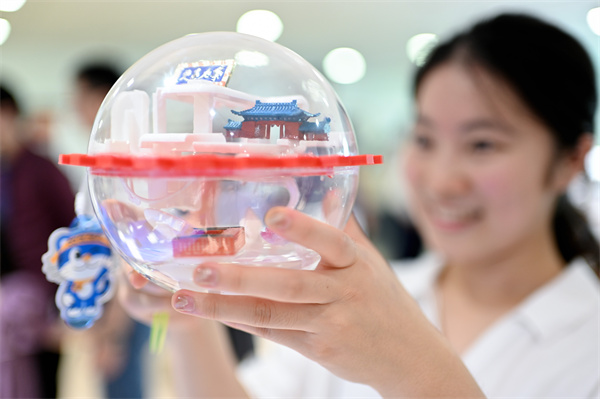
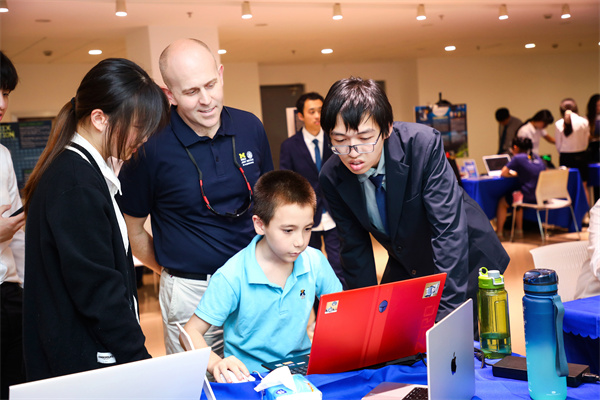
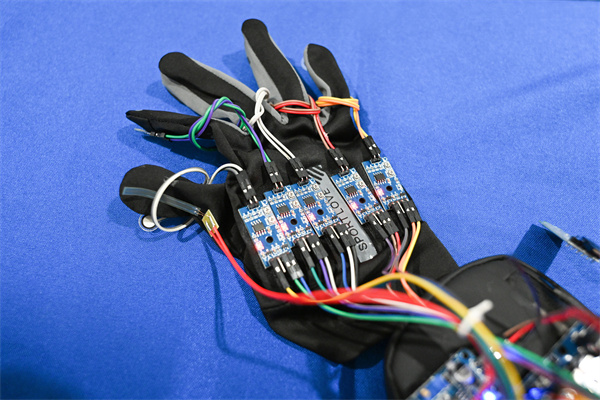
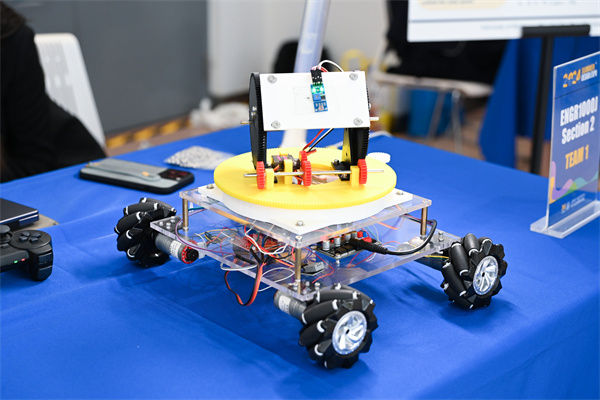
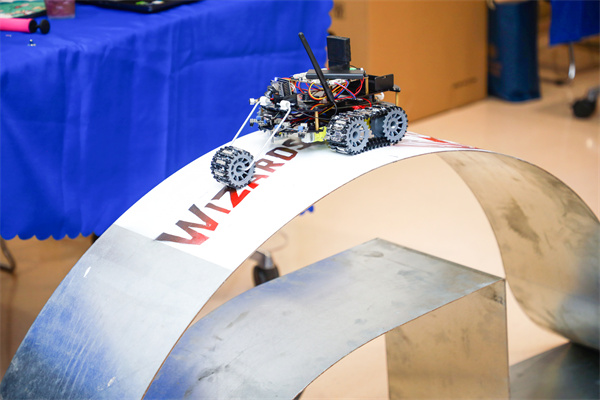
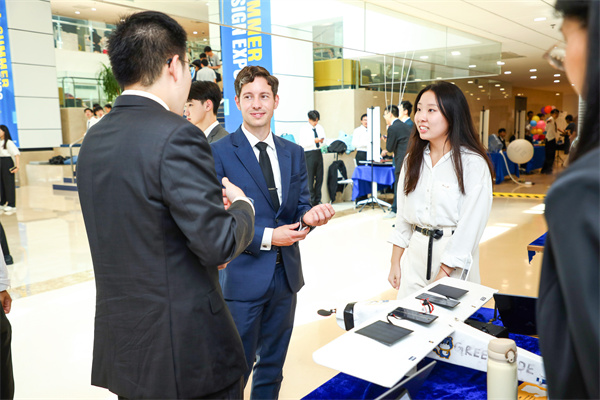
“Dr. Spider” – A Robotic Explorer for Mars

Navigating smooth glaciers and rugged terrain on Mars presents a significant challenge. A NASA study has highlighted the need for high-endurance, slip-resistant, and flexible robots by showcasing a massive glacier lake on Mars with a diameter of 82 kilometers. In response, JI students have designed the “Dr. Spider,” a six-legged crawling robot model for Martian glacier exploration. Equipped with an integrated pneumatic system and suction cups for slip resistance, Dr. Spider can securely adhere to surfaces and easily reposition itself. Each leg features three servos, enabling complex movements. The leg design, inspired by spiders, enhances terrain adaptability and stability. The control system, which includes dual mainboards and gyroscopes, further improves stability. Additionally, Dr. Spider’s energy-efficient design follows mathematical principles to minimize energy consumption at various speeds, ensuring prolonged high-endurance performance for extended missions.
Aerial Signal Booster for Disaster Relief

In disasters such as meteorological or geological events, signal issues often impact the efficiency of rescue operations. To address this challenge, JI students have developed the “Portable Disaster Signal Transmission Airship.” This innovative signal relay aircraft addresses the battery and endurance limitations of current signal transmission drones by providing extended, uninterrupted signal service. The 3-meter helium-filled airship offers lift for the transmission module, while propellers on either side, controlled by separate switches, manage forward movement and steering. A hand-cranked generator powers the airship and charges the module, combining energy efficiency with sustainability. The airship can also serve as a storage unit for emergency supplies, enabling quick restoration of signals during disasters. Its straightforward circuitry and system design ensure reliability and ease of use. Compared to existing drones, its cost-effectiveness makes large-scale commercial deployment feasible. This innovative temporary signal relay solution holds promise for promptly restoring communications in future disasters, potentially saving more lives.
“Escape the Dream” – A Game to Evade Illusions

Beyond cosmic exploration, the imaginative JI students showcase their creativity and unique worldviews through game design. Their game, “Escape the Dream,” creates a mesmerizing jelly-like world where a girl, ensnared by her own greed, finds herself in peril. Realizing that she is trapped, she resolves to escape and find her mother. As players step into the girl’s shoes, they face numerous obstacles posed by the jelly guard legion. Players must skillfully use abilities such as sprinting, wall-jumping, time pausing, and weapon attacks to fend off jelly monsters. The game emphasizes pure combat experience, avoiding complex mechanics while preserving the essence of battle. Unique actions and innovative slow-motion features ensure that players can master the battlefield. With only one life for both the player and the monsters, the game offers an exhilarating challenge. The game’s impressive visual and sound effects further enhance the immersive experience.
Automatic Fruit Peeler Adapts to Different Fruits

For many fruit enthusiasts, peeling can be a tedious and somewhat risky task. Existing peelers often face various issues: they can’t handle unusual fruits, the blades can slip, they are prone to malfunction, their peel collection systems are inadequate, and they are often difficult to clean and operate. To address these problems, JI students have designed an automatic fruit peeler with power control. This peeler features a specialized fruit fork to secure irregularly shaped fruits, while its flexible adaptive blades peel efficiently. It includes a comprehensive peel collection system to maintain cleanliness, and safety protection components to ensure user safety. The structured design allows for easy disassembly and cleaning, making fruit peeling easier and more convenient.
Graduation Designs Empower Daily Life: Leading the Way in Smart and Green Innovations
In contrast to the imaginative projects of freshmen, the designs by senior students are more closely aligned with everyday life and real-world business applications. These graduates offer creative solutions and ideas addressing various practical challenges posed by businesses.
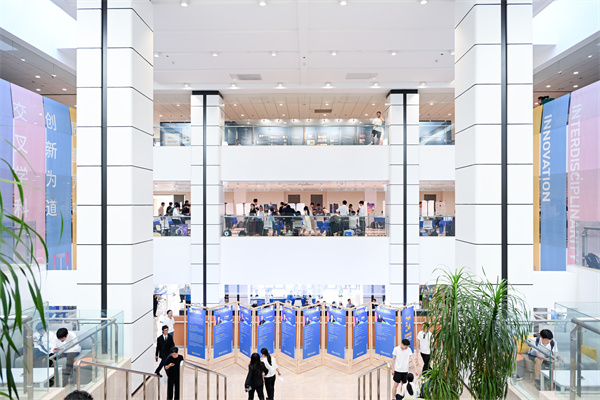
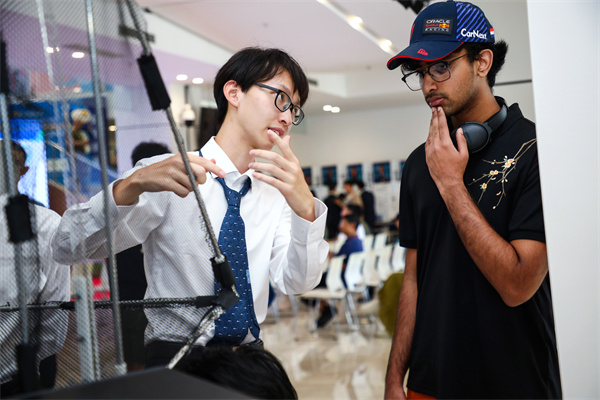
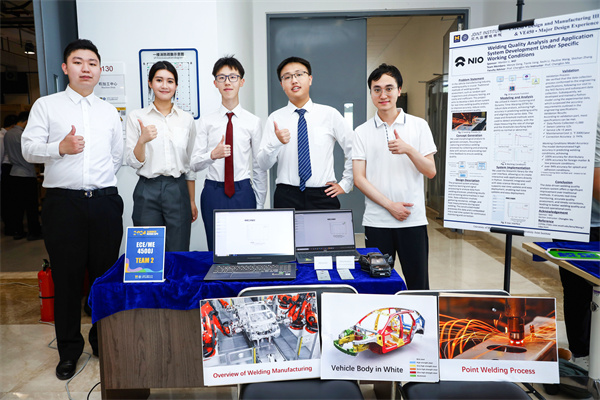
Automated Sustainable Greenhouse Powered by Perovskite Solar Cells

As demand for sustainable agriculture has surged in the 21st century, JI students have developed an automated greenhouse powered by perovskite solar cells. Known for their high efficiency, low cost, and adaptability to various light conditions, these cells provide energy for the greenhouse’s LED lighting, fans, irrigation system, and air conditioning, significantly reducing operational costs and carbon footprint. The greenhouse’s automation system, based on the Raspberry Pi platform, remotely collects and monitors critical data such as temperature, humidity, soil moisture, and light intensity, allowing users to optimize the growing environment for their crops. Its energy management system stores solar power in batteries, ensuring stable power supply even in low-light conditions, and distributes it as needed to various components. This project demonstrates the feasibility and advantages of using perovskite solar cells in agriculture. The Greenlight open-source model developed can serve as a reference for large-scale applications, driving agricultural innovation toward a sustainable and food-secure future.
Automated Testing Tool for In-Car Infotainment Systems

With the rise of new energy vehicles and advancements in automotive intelligence, there is an increasing demand for entertainment and smart features in travel tools. In-car infotainment systems have become crucial, offering not only basic functionalities but also advanced features that enrich the driving experience. However, the complexity of these features results in intricate testing processes. To address this, automated testing tools for in-car entertainment systems have emerged, simulating real-world scenarios to help developers identify and resolve issues in advance, thereby freeing up testing personnel. JI students have designed a testing tool that uses a slide table and robotic arm to manipulate a capacitive stylus, simulating human touch to test automotive infotainment systems. This approach is necessary because some in-car systems are closed off and, for commercial reasons, cannot be simulated electronically and must be tested via simulated touch. To enhance testing efficiency, the project incorporates computer vision and machine learning algorithms and provides open interfaces for related operations, improving usability and testing outcomes.
Large Language Model AI for Alleviating Adolescent Psychological Stress

Addressing the issue of adolescent stress and the scarcity of psychological counseling resources is a global challenge. Adolescents today face various pressures, and a lack of accessible, affordable counseling resources, along with traditional barriers, hinders their ability to seek help. With the advancement of large language models like ChatGPT, there is hope for alleviating these issues. However, existing general models often fall short in providing effective psychological counseling for adolescents, struggling to gauge user emotions, guide responses, and offer comfort. To address these challenges, JI students have identified typical adolescent personalities and common stress scenarios. They used ChatGPT-4 to simulate dialogues between adolescents with different personalities and counselors in various scenarios, and then fine-tuned the model using the GLM open-source framework. The fine-tuning approach based on LoRA further enhanced the model’s performance in adolescent counseling dialogues. This project aims to develop a framework for applying large language models in adolescent psychological counseling, with the goal of significantly reducing psychological stress among young people.
Development of a Digital Twin Toolchain for Excavators

Excavator operations come with high risks and physical strain for operators working outdoors. Beijing-based Builder[X] has developed a remote control platform for excavators, using a remote control system to reduce safety risks and improve working conditions. However, remote-controlled excavators still have room for improvement, such as limited camera viewpoints, which make it difficult for operators to fully observe and perceive 3D space, and the need to enhance efficiency and reduce the burden for repetitive tasks. Creating accurate digital twin models is crucial in this context. To address these needs, JI students developed an efficient and precise toolchain for constructing digital twin models of excavators. The process involves scanning the excavator’s shape and color information using the 3DScanner App, processing and measuring the data with open-source software, reconstructing the model using preset templates, and finally exporting it in URDF format. This process takes less than two hours, with minimal errors and collision-avoidance features. The project is simple, cost-effective, easy to obtain, and highly adaptable, with potential for future expansion to modeling other types of construction machinery.
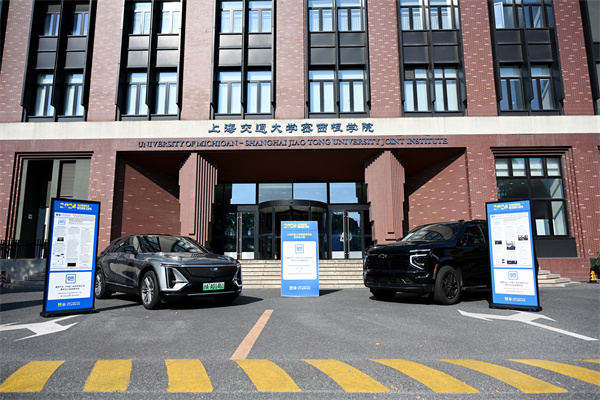


Enterprise representatives gather at the Long Bin Building.
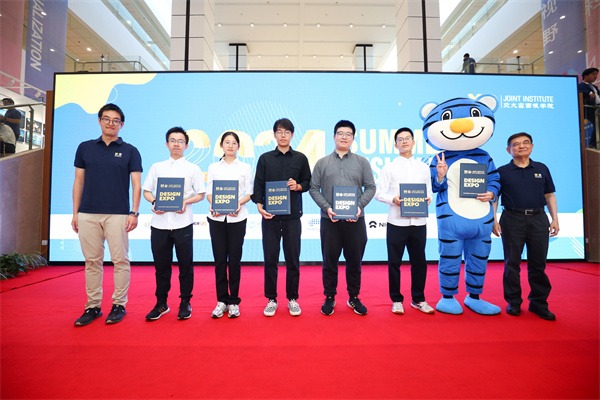
Group photo of Gold Award Capstone project team
The JI graduation design projects have always emphasized the integration of industry, academia, and research. Since 2010, more and more enterprises have been providing and sponsoring “customized” projects aligned with their product’s market development direction. The proportion of collaborative graduation projects between JI and enterprises has been increasing, enhancing the effectiveness of engineering practical teaching through synergistic collaboration of university and industry resources. The design expo employs various effective methods like course introductions, visual displays, and dual mentorship with companies to stimulate students’ creative thinking from multiple perspectives. It offers a diverse platform for talent cultivation and corporate cooperation by the institute.
Editor on Duty: Tao Qingxiao
Responsible Editor: Jiang Qianqian, Wang ninghua, Li Xinyu

